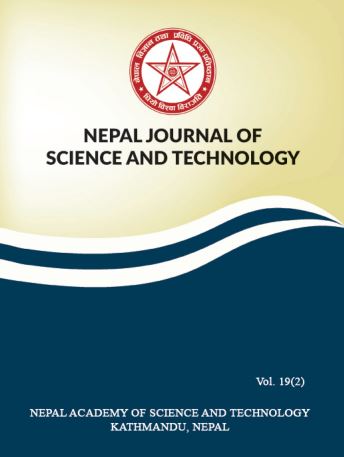Green Synthesis of Silver Nanoparticles using Medicinal Plants BerberisAsiatica and Cassia Fistula and Evaluation of Antioxidant and Anti-bacterial Activities
DOI:
https://doi.org/10.3126/njst.v20i1.39384Keywords:
Berberis asiatica, cassia fistula, biosynthesis, silver nanocolloid, anti-bacterial potentialAbstract
The application of silver nanoparticles in various sectors including health related field is remarkably profound. Nowadays, the research of synthesizing metal nanoparticles (MNPs) using plant extracts is fascinating field as it offers the eco-friendly and cost-effective method for nanoparticle synthesis. In this study, we synthesized silver nanoparticles (AgNPs) using methanolic extract of B.asiatica and C. fistula regarding their ethnomedical importance. The synthesized AgNPs were characterized by UV-Visible spectroscopy, Fourier transform infrared spectroscopy (FTIR) and X-ray diffractometer (XRD). UV-vis spectroscopy exhibited the characteristic Surface Plasmon Peak of silver nanoparticle~420 nm.FTIR data were measured to get a preliminary idea on the functional groups responsible for the stabilization of AgNPs. XRD data confirmed the natural crystal structure with a face centered cubic of AgNPs. The antibacterial activity of biosynthesized AgNPs was assessed by testing promptly available gram-positive Staphylococcus aureus and gram-negative Escherichia coli bacterial strain and antioxidant activity was calculated by DPPH assay. The overall outcomes of the studies concluded that the application of the biogenic synthesis of AgNPs of B. asiaticaas an antioxidant and antibacterial agent is more potent showing IC50 value 65.1±1.30 μg/mL and the highest zone of inhibition 15 mm in diameter against S. aureus.
Downloads
Downloads
Published
How to Cite
Issue
Section
License

This work is licensed under a Creative Commons Attribution-NonCommercial 4.0 International License.
Authors retain copyright and grant the journal right of first publication.




